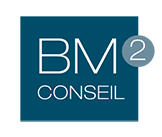Content
- Why Should You Use a Forecast?
- What Is Budgeting?
- How to Use a Forecast to Build your Business
- What is the difference between forecast and budget?
- Differences
- Drive Business Performance With Datarails
- Forecasting: explained
- Is Forecasting Becoming More Important than Budgeting?
- Step #1: The Budget Should Be Divided Into Time Periods

Business forecasting methods can range from simple techniques, such as market analysis and extrapolation, to more complex approaches involving statistical models and predictive analytics. The choice of forecasting method depends on the nature and industry of the business. Budgets are intended to be an outline of the direction that management desires to take your business. Forecasts are reports that provide a more unambiguous indication of where the company is heading and whether it’s reaching its goals and ambitions.
Comments on New York City’s Executive Budget for Fiscal Year … – New York City Comptroller
Comments on New York City’s Executive Budget for Fiscal Year ….
Posted: Tue, 23 May 2023 03:39:27 GMT [source]
In contrast, you use projections internally to assess such things as the viability of investments and the payoff from introducing a new product. You might also create a projection where the assumption is 80% attainment, where your fully-ramped AEs only bring in $480,000 in revenue. You base your forecast (a 15% increase) on reasonable knowledge of how a large affiliate network and sales campaigns can improve sales volume. I needed to know the basic difference between the Budget Version & Forecast Version. Why is the Budgeted Version used in some organizations even if we have the Actual & Forecast Version. Consider the past trends from prior years and use those trends for the allocated amounts would be another, more accurate strategy.
Why Should You Use a Forecast?
Expenses are then categorized and allocated based on priorities and financial obligations, such as housing, transportation, food, utilities, debt payments, entertainment, and savings. Forecasts tend to be more strategic than budgets, providing you with a roadmap of where your business expects to go based on historical data and business drivers. You will compare your business’s budget to actual results to determine the extent to which you’re varying from expected performance. Management may use this comparison to tweak your strategy and remediate any potential issues. Budgets are relatively static and may only be updated on an annual basis, although in some cases, budgeting is performed at more regular intervals. Best when updated regularly, this forecast can be a top-down or bottom-up exercise and custom-tailored to the company’s needs.
For example, if you want to grow your revenue from service in your bike shop, you’ll probably want to forecast increased marketing spending and perhaps increased headcount. The definitions of the terms “budget” and “forecast” help us understand the role each one plays in the company’s financial management. It takes hard work and, more importantly, seriousness to do the financial management of a business – of any size.
What Is Budgeting?
Projected financial statements are prospective financial statements that incorporate the impact of potential future events into the financial data. They give you an idea of your financial position if a particular event were to occur. Investors and stakeholders use forecasts to get the financial picture that the management thinks is most likely.
- Making assumptions about the timing of revenue and expenses is all that is needed for the actual financial model.
- A sales forecast can be short- and long-term projections, and are used to inform a budget, which is typically a more near-term view of the company’s target financial position.
- A budget is a financial plan that outlines projected income and expenses over a specific period of time.
- These companies then are able to be more responsive in a fast-moving market while avoiding the surprises of their quarterly-routine forecasts.
- Typically, previous data is utilized to predict the future based on certain assumptions.
Most Budgets are created on an annual basis, therefore revenue and expense expectations are typically annualized. This does not take into account the cyclical nature of most revenue and expenses. The primary difference between a budget and a budget forecast is their intended uses. A budget is usually used as a roadmap, where a budget forecast provides a projection of the budget used for variance analysis. Each budgeting method has value, depending on what the company is trying to accomplish and where it is in its growth journey.
How to Use a Forecast to Build your Business
They are also sometimes used to secure bank loans or other external financing. Differentiating between forecast vs. projection can be tricky since the terms seem similar at first glance. However, you prepare forecasts based on what you expect to happen in the future. On the other hand, you use projections for what-if scenario analysis, so estimates change under each scenario. Usually, most budgets require the use of historical data and also utilize some level of assumptions.
- In most cases, it functions over a short-term time horizon, no longer than a year.
- A budget helps businesses set financial goals and track their progress towards those goals.
- Forecasting can be utilized for short-term operational adjustments or considerations, as in sales performance, staffing, inventory, and/or production plans.
- For example, the revenue plan is created by the sales and marketing team based on various sources.
- It also helps them make informed decisions about where to invest their resources, which can help them grow their business and increase their profitability.
- If you’re looking for more guidance on how to manage your business with regular financial reviews, check out our guide on how to run a monthly review meeting.
In contrast, financial forecasting is a strategic tool that projects a company’s growth trajectory over several years in the future. In the case of a new company, forecasts would be prepared by tracking the past sales of competitors. That https://www.bookstime.com/ said, don’t anticipate business plans or budgets to go anywhere any time soon. Both benefit from the information captured in forecasting, and they also provide a point from where forecasting starts – and returns to, as actuals unfold.
What is the difference between forecast and budget?
Utilize the forecast to develop key performance indicators after the budgeted amounts are projected for each of the following months. This will help to guarantee that operations get as close as feasible to the budget prediction. At the end of the day, you want to focus on systems and tools that help your business grow. Create financial projections https://www.bookstime.com/articles/budget-vs-forecast that meet your business needs, and then use them on a regular basis to measure your performance and adjust course as necessary. Forecasts, on the other hand, are about thinking big picture to help your business grow. Forecasts are driven by broader goals, like how much revenue you can bring in from an entire segment of your business.

The content of a budget and financial forecast is different—the former contains specific goals like the number of items to sell or the amount of money to earn. A cash flow forecast is a financial plan that outlines the expected cash inflows and outflows for a given period (usually a month, quarter or year). Unlike a budget, which looks at income and expenses over a year, a cash flow forecast focuses on the timing of cash flows, such as when payments are due and when income is expected to be received. Using both budgeting and forecasting together for financial planning provides a comprehensive approach to managing the financial aspects of a business. The combination of the two allows for flexibility and adjustments as new information becomes available. Forecasts can be updated and refined, enabling businesses to adapt their budgets to reflect changing market conditions or internal factors.

Laissez un commentaire